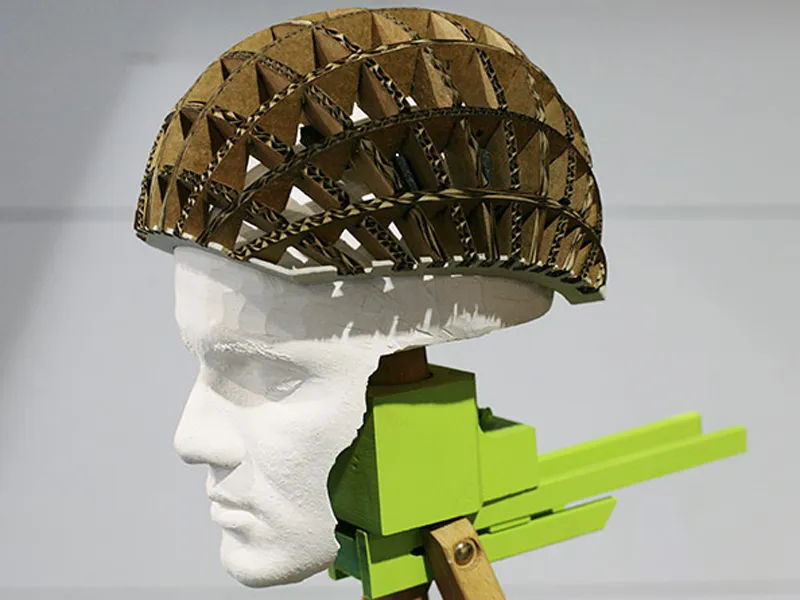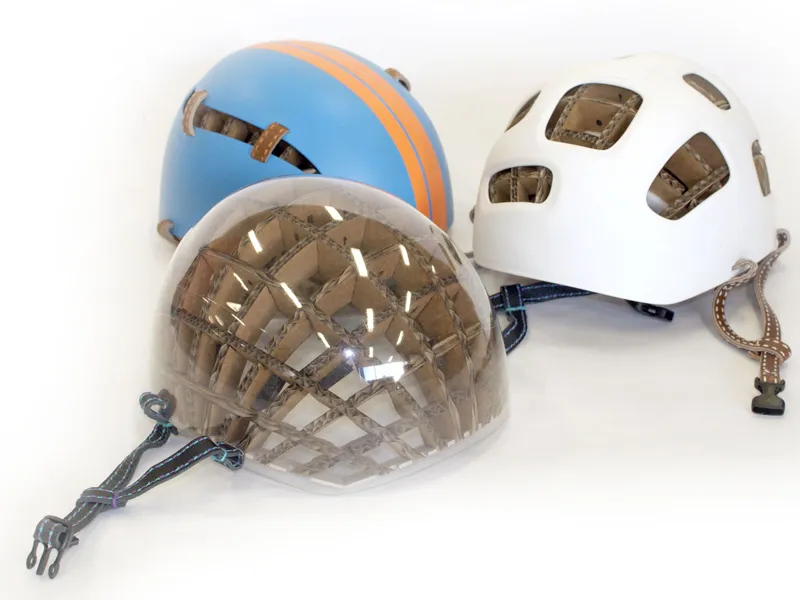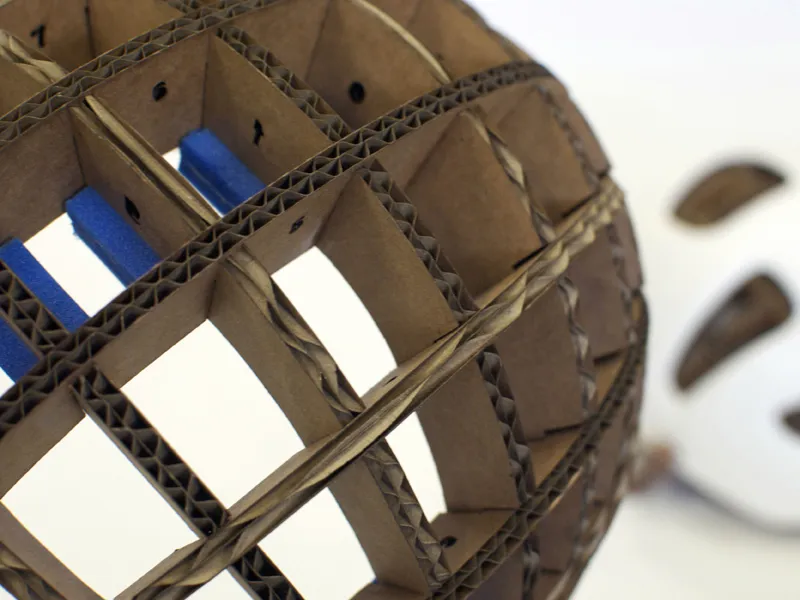Much is made today with carbon fiber, but this year the hot new material might be one that was first patented back in 1856 in England. Known as corrugated or pleated paper, it is more commonly known as cardboard.
Earlier this year we saw a $20 cardboard bike and now a student at the Royal College of Art in London has devised a cycling helmet that made of cardboard.
Called the Kranium, the cardboard helmet promises to absorb the energy of a crash and protect the wearer.
First a little clarification on cardboard. The material used by designer Anirudha Surabhi is actually corrugated fiberboard, which is the paper-based material that consists of a fluted corrugated sheet and one or two flat inner boards. While this is widely known to many as “cardboard,” technically any heavy paper-pulp based board is also cardboard.

Cardboard crumples — and that's a good thing
The key to Surabhi’s design isn’t the paper but rather the corrugated nature of the material. Surabhi, who devised this helmet design after suffering a serious cycling accident that resulted in a concussion, modeled it after the impact-absorbing qualities of woodpecker cartilage. Surahbi noted that the bird often experiences severe impacts to its head as it strikes a tree in its pecking motion.
The corrugated cartilage thus acts as a buffer between the beak and skull. Surabhi worked to devise a helmet that mimicked that structure and cardboard seemed an obvious choice.
Surabhi thus created the early prototypes utilizing honeycomb-shaped corrugated cardboard instead of opting for the traditional polystyrene that is used in most helmets today. The result was the Kranium helmet, which German bike lock and helmet company Abus has since licensed with plans to release a clear plastic shell version in 2013.

Abus has licensed the design to sell with plastic shells in 2013
While seeming low-tech in nature, the helmet has been designed to meet or exceed Europe’s safety standards and its designer claims that the corrugated cardboard structure can absorb three times the energy of many polystyrene-based helmets, even after multiple impacts. He said that the helmet underwent significant testing to back up his claims, with tests conducted in China, Germany and the United Kingdom.
“Ideally they test five helmets and give you the go-ahead but since this was a unique concept they tested 50-plus helmets as they didn’t believe the results were that good,” Surabhi told Wired.com. “They ultimately gave us the certification, saying that it was much better at impact absorption.”
This design also promises to be a lighter than most helmets, especially given that much of it is nothing but air in the corrugations. Users shouldn’t worry about a little water hurting it either, despite the fact that rain can turn the sturdiest box into a pile of soggy paper.
The helmet can stand up to the elements, as it has been treated to be sweat- and rain-proof. The next step might the biggest one: Surabhi is looking to create one that could pass motorcycle safety standards.
